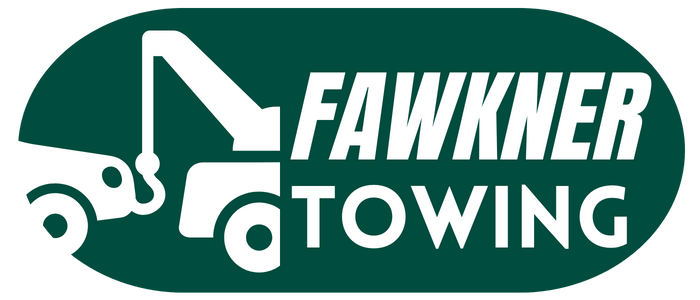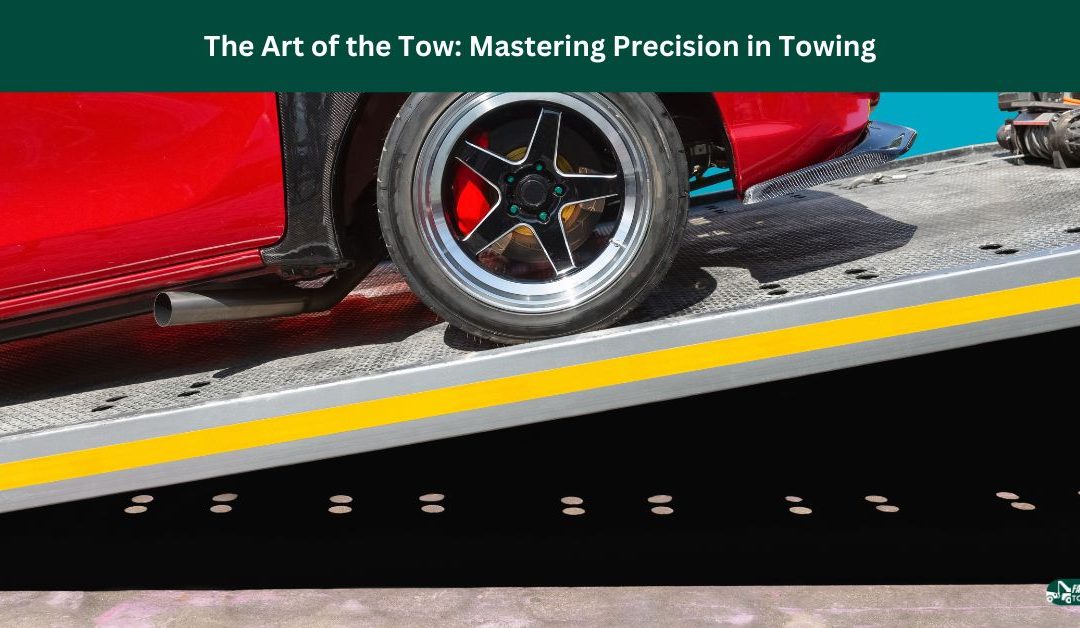Towing might seem like a straightforward job — just hook up the car and go, right? But in reality, towing is an art form that requires precision, skill, and experience. From tight urban spaces to delicate roadside recoveries, each situation requires careful calculation, control, and sometimes even creativity. This article delves into the mastery behind towing, highlighting the tools, techniques, and expertise involved in each successful job.
1. Understanding the Science of Balance and Weight Distribution
One of the cornerstones of precision towing is understanding balance and weight distribution. A vehicle must be properly positioned and secured on a tow truck to avoid instability during transport. Tow operators must account for:
Gross Vehicle Weight Rating (GVWR): This is the maximum weight a tow truck can safely carry. Exceeding the GVWR can lead to poor handling and even dangerous tipping.
Weight Distribution: Proper weight distribution prevents sway and ensures that the towed vehicle stays secure. Tow operators use winches, straps, and chains to center the vehicle’s weight along the truck’s centerline, ensuring a smooth and controlled journey.
Vehicle Positioning: Vehicles are positioned in ways that maximize stability. For instance, front-wheel-drive vehicles are often towed with the front wheels elevated, while rear-wheel-drive vehicles may require the rear wheels to be lifted, depending on the type of truck and towing method.
Mastering this science ensures that the tow truck operator can maneuver safely, regardless of the type of vehicle or driving conditions.
2. Choosing the Right Towing Method
Different towing situations require different methods, and choosing the wrong approach can result in damage or instability. Here are the most common towing techniques and when they’re used:
Flatbed Towing: Ideal for all-wheel-drive, luxury, or specialty vehicles, flatbed towing involves loading the entire vehicle onto the truck’s flat platform, ensuring all wheels are off the ground.
Hook and Chain Towing: Although less common today, hook and chain towing is useful for situations where wheels can be lifted safely without damaging the car’s undercarriage. It’s often used for junk cars or damaged vehicles.
Wheel Lift Towing: A versatile method where either the front or rear wheels are lifted off the ground. Wheel lift towing is ideal for short-distance tows and works for many front-wheel-drive and rear-wheel-drive vehicles.
Heavy-Duty Towing: For buses, semis, or other large vehicles, heavy-duty towing requires special equipment, like boom trucks, which are designed to handle the extra weight and size.
Precision in selecting the correct towing technique ensures the safety of both the vehicle and the operator, as well as a smoother experience for the driver being assisted.
3. Navigating Tight Spaces with Precision
Urban environments can present a range of obstacles, from narrow alleyways to crowded parking lots. Skilled tow operators use their knowledge of maneuvering and angles to retrieve vehicles from these tricky spots. Techniques include:
Angle Calculations: Towing professionals calculate angles to ensure minimal damage while maneuvering around tight corners and cramped spaces.
Precision Steering: Experienced operators have honed their steering skills to navigate tight areas while keeping the vehicle secure. Small adjustments make a big difference in these situations.
Utilizing Technology: Some towing companies use advanced equipment, like rear-facing cameras and remote-controlled winches, to monitor and guide the towed vehicle safely in tight spaces.
In these challenging environments, every movement is measured and purposeful, demonstrating the true art of towing in action.
4. Mastering Winching Techniques for Recovery
Winching is an essential skill for vehicle recovery, especially in off-road situations, ditches, or other hard-to-reach areas. Successful winching requires careful planning and an understanding of leverage, force, and vehicle weight. Tow operators are trained to:
Assess the Terrain: Before engaging a winch, operators evaluate the stability of the ground, angle of the pull, and proximity to other vehicles or obstacles.
Use Proper Anchor Points: Operators identify the right anchor points on both the winch and the vehicle, ensuring a controlled and balanced pull that avoids stress on the towed vehicle.
Control Winch Speed: A slow, steady winch is often safer and more effective than a quick pull. By controlling the winch speed, operators can avoid jerking movements that might cause further damage to the vehicle.
Winching is not just about brute force; it’s a calculated effort that requires skill, patience, and often a creative approach to get the vehicle out safely.
5. Ensuring Vehicle and Tow Truck Safety
Safety is paramount in towing, and towing operators must be vigilant in following protocols to prevent accidents or damage. Safety steps include:
Securing Straps and Chains: Operators double-check all securement points to ensure the towed vehicle stays firmly attached, regardless of bumps or turns.
Braking Control: Drivers are trained to handle the added weight and altered braking dynamics of towing. Braking too quickly or harshly can destabilize the towed vehicle, so operators use controlled braking techniques to keep the transport steady.
Monitoring Load Shifts: Regular checks during transport ensure that the load has not shifted, which could affect balance and control.
Every safety measure contributes to a controlled, safe towing experience, both for the towed vehicle and others on the road.
6.Advanced Training and Certification
Towing professionals often complete certifications and ongoing training in advanced towing techniques. Many states and regions require towing operators to have commercial licenses and specialized training, ensuring they understand the latest towing equipment, legal standards, and safety protocols.
Certifications such as the WreckMaster or TRAA (Towing and Recovery Association of America) can provide additional training in specialized towing scenarios, like heavy-duty towing, off-road recovery, and advanced winching techniques. These certifications are a testament to the operator’s commitment to professionalism and skill mastery.
Real-Life Examples of Precision Towing
Here are a few stories showcasing how precision towing can make a difference:
Highway Rescues
An overturned semi on a busy highway required careful towing to prevent further roadblocks. A skilled heavy-duty tow operator used a boom truck to lift the semi carefully, repositioning it without causing additional damage and quickly clearing the lane for other drivers.
Urban Parking Conundrum
In a crowded urban parking structure, a vehicle was stranded with no room to maneuver. The tow operator employed a wheel-lift truck, using precise steering and calculated movements to extract the vehicle without scratching neighboring cars or damaging the structure.
Conclusion
Mastering precision in towing is an art form that requires not only physical skill but also a deep understanding of physics, safety, and advanced techniques. Whether maneuvering in tight spaces, choosing the best towing method, or executing complex winching recoveries, towing professionals bring expertise, attention to detail, and professionalism to every job. Their commitment to safety, skill, and precision ensures that each tow is not just a job but an art in its own right. For every stranded driver, these dedicated experts provide not only a solution but also peace of mind on the road.
If you are in Merri Creek Trail, Reservoir VIC 3073, Australia and looking for a tow truck service, below is the best way to visit us.
Fawkner Towing
18 Emma St, Fawkner VIC 3060
(03) 4050 4989


Recent Comments